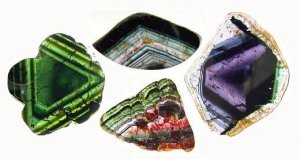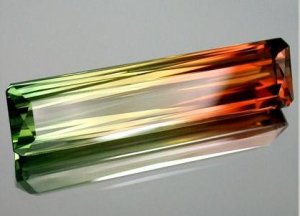LewisJewelersA2
Rough_Rock
- Joined
- Feb 4, 2006
- Messages
- 10

Date: 2/4/2006 10:48:36 AM
Author: valeria101
''Parti Color'' ?
It may be more unusual to get parti color rough cut so that more than one color shows face up.
Date: 2/4/2006 12:32:41 PM
Author: Richard M.
Can you tell us what the 'parti color' rough looks like? What would distinguish it from ordinary bi- or tri-color tourmaline? Are any special techniques required in cutting it?
Just curious.
Richard M.

Date: 2/4/2006 12:49:18 PM
Author: valeria101
I found the name ''parti color'' assigned to water worn tourmaline nodules with different colors distributed as random clouds and patches - sometimes obviously a thick outer rind, sometimes not. Hearing ''bi-color'' I think of a pencil-like crystal with neatly separated color zones that can be cut to show off the said neat separation...At least this is how I have heard the term used - either by sellers or in publications (one GG number from ''98 talked about ''parti color tourmaline'' in this sense).
ThanksDate: 2/4/2006 3:51:08 PM
Author: Richard M.
I've cut similar parti-colors from waterworn Nigerian rough crystal segments sometimes called 'flying saucers'.










